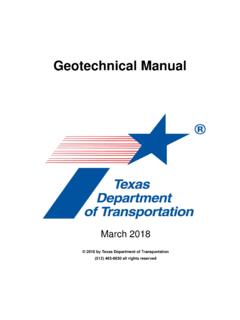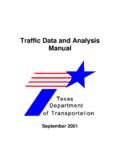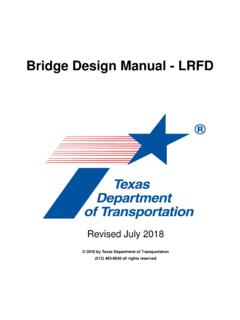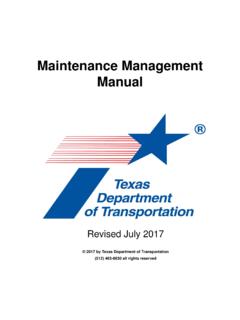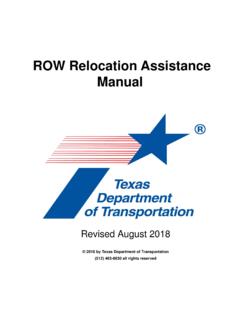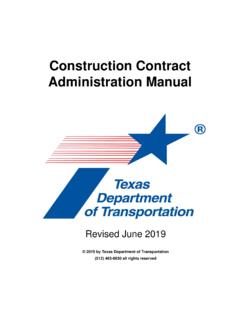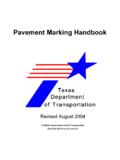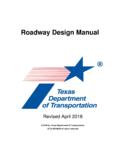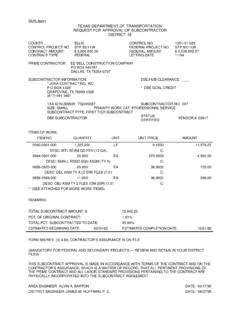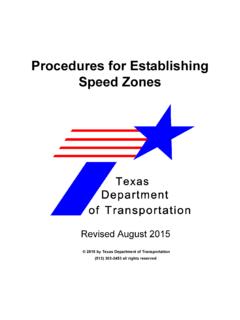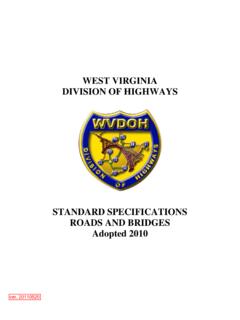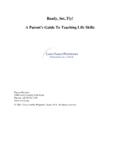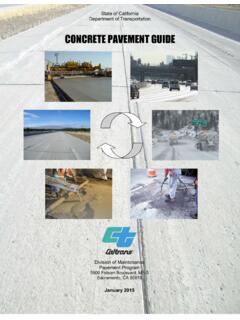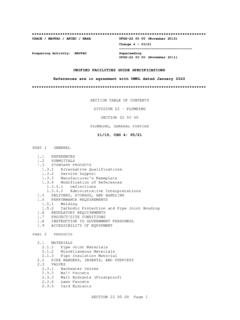Transcription of Concrete Repair Manual (CRM)
1 Concrete Repair ManualJanuary 2019 2018 by Texas Department of Transportation(512) 463-8630 all rights reservedManual Notice 2019-1 From:Graham A. Bettis, , Director, Bridge DivisionManual: Concrete Repair ManualEffective Date:January 25, 2019 PurposeThis Manual includes step-by-step Repair procedures for use on new and existing Concrete members cast for the Texas Department of Transportation (TxDOT).ChangesRevisions to this Manual include various editorial changes including reference to CST revised to MTD, reference to epoxy anchors revised to adhesive anchors, and patch revised to Repair ; revising Contractor s Responsibilities to include visual and non-destructive testing to ensure quality of repairs; incorporated procedure to address lifting strands on prestressed piling; added storage, temperature, humidity, and document controls to ensure material quality.
2 Added typical Repair detail and photos showing steps for intermediate spall repairs; revised Gravity-Fed Epoxy to Gravity-Fed Sealant to include other acceptable contact the Bridge Division with comments or Manual Notices are available in a PDF Repair Manuali TxDOT 11/2018 Table of ContentsChapter 1 IntroductionSection 1 Overview .. 1-2 section 2 Using the Concrete Repair Manual .. 1-4 section 3 Standard Specification References to the Concrete Repair Manual .. 1-5 section 4 Repairs and Repair Manual .. 1-6 section 5 Repair Procedure Submission and Approval.
3 1-7 section 6 Quality Control/Quality Assurance.. 1-8 section 7 Definitions and Abbreviations .. 1-11 Chapter 2 Damage Assessment and Repair TypesSection 1 Defining Concrete Spalls .. 2-2 Description.. 2-2 Notes .. 2-2 Spall Categories .. 2-2 Selecting an Appropriate Repair Procedure .. 2-3 section 2 Voids Due to Honeycombing .. 2-5 Description.. 2-5 Investigating Honeycombed Regions .. 2-5 Repairing Honeycombed Regions .. 2-5 section 3 Damage over Traffic .. 2-6 Description.. 2-6 section 4 Prestressed Concrete Piling.
4 2-7 Description.. 2-7 Reference .. 2-7 Notes .. 2-7 Damage Prior to Driving ( in the Fabrication Yard) .. 2-7 Damage During Driving .. 2-8 Lifting Strands.. 2-9 section 5 Taking, Marking, and Patching Cores .. 2-10 Description.. 2-10 Selection Criteria .. 2-10 Taking Cores to Check Compressive Strength .. 2-10 Taking Cores to Investigate Potential Concrete Material Problems .. 2-10 Taking Cores to Investigate Specific Defects .. 2-11 Marking Cores .. 2-11 Patching Cores .. 2-11 section 6 Trimming or Cutting Prestressed Concrete Girder Ends.
5 2-12 Concrete Repair Manualii TxDOT 11/2018 Description.. 2-12 Provisions for Acceptance .. 2-12 Repair Procedure .. 2-13 section 7 Recessing Prestressed Strands .. 2-14 Description.. 2-14 Repair Procedure .. 2-14 section 8 Rail Damage Due to Vehicular Impact .. 2-15 Description.. 2-15 Assessment .. 2-15 Repair Procedure .. 2-15 Chapter 3 Repair Materials and ProceduresSection 1 Minor Spall Repair .. 3-2 Description.. 3-2 Material .. 3-2 Repair Procedure .. 3-3 Commentary .. 3-5 section 2 Intermediate Spall Repair .
6 3-6 Description.. 3-6 Material .. 3-6 Repair Procedure .. 3-7 Commentary .. 3-16 section 3 Major Spall Repair and Concrete Replacement .. 3-17 Description.. 3-17 Material .. 3-17 Repair Procedure .. 3-17 Commentary .. 3-21 section 4 Bridge Deck Repair .. 3-22 Description.. 3-22 Selecting an Appropriate Repair Material .. 3-23 Repair Procedure .. 3-23 Commentary .. 3-26 section 5 Crack Repair Pressure-Injected Epoxy .. 3-27 Description.. 3-27 Material .. 3-27 Repair Procedure .. 3-27 Commentary .. 3-29 section 6 Crack Repair Gravity-Fed Sealant.
7 3-30 Description.. 3-30 Concrete Repair Manualiii TxDOT 11/2018 Material .. 3-30 Repair Procedure .. 3-30 Commentary .. 3-31 section 7 Crack Repair Surface Sealing .. 3-33 Description.. 3-33 Method 1: Rout-and-Seal Cracks.. 3-33 Method 2: Surface Sealing.. 3-33 Concrete Repair Manual1-1 TxDOT 01/2019 Chapter 1 IntroductionContents: section 1 OverviewSection 2 Using the Concrete Repair ManualSection 3 Standard Specification References to the Concrete Repair ManualSection 4 Repairs and Repair ManualSection 5 Repair Procedure Submission and ApprovalSection 6 Quality Control/Quality AssuranceSection 7 Definitions and AbbreviationsConcrete Repair Manual1-2 TxDOT 01/2019 Chapter 1 IntroductionSection 1 OverviewSection 1 OverviewThis Manual includes step-by-step Repair procedures for use on new and existing Concrete members cast for the Texas Department
8 Of Transportation (TxDOT). It includes a comprehensive list of com-mon Concrete distress and Repair methods. The methods adhere to industry standards and the provisions from applicable documents by the American Concrete Institute and American Society for Testing and Materials. This Manual was developed in collaboration with various Repair material manufacturers to ensure that the procedures meet common proprietary requirements. In general, repairs to TxDOT Concrete structures should be implemented in accordance with the methods outlined in this Manual .
9 However, unusual circumstances occasionally arise. Engineers may determine that methods differing from those outlined here are more appropriate in some to the Manual are summarized in the following 1-1: Manual Revision HistoryVersionPublication DateSummary of Changes2015-1 April 2015 New 2017 Revision adding Manual revision history to Chapter 1; revision breaking Chapter 1 into seven sections with no changes to content; revision adding section 8, discussing rail damage due to vehicular impact, to Chapter 2; revisions for consistency with current DMS-4655.
10 Revised maximum application for neat product to 2"; various revisions to Chapter 3, section 4, Bridge Deck Repair and Sec-tion 6, Crack Repair Gravity-Fed Epoxy for improved performance of repairs; minor formatting and editorial revisions in various Repair Manual1-3 TxDOT 01/2019 Chapter 1 IntroductionSection 1 Overview2019-1 January 2019 Various editorial revisions including: Reference to CST revised to MTD Reference to epoxy anchors revised to adhesive anchors. Various references to patch revised to 1, section 6: Incorporated visual and non-destructive evaluation of Repair material as part of Contractor's Responsibilities (QC).
